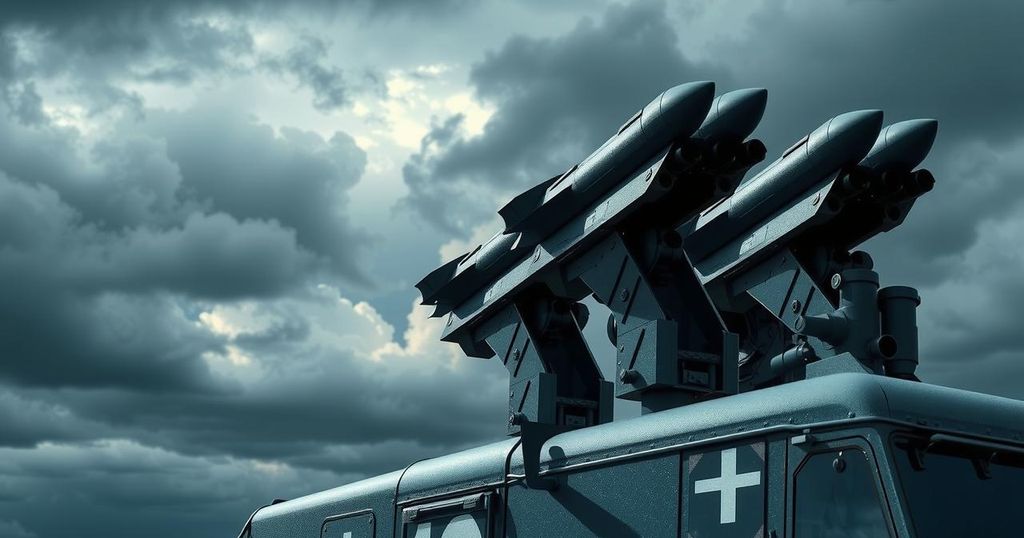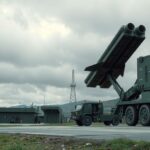The U.S. Typhon Missile System: A Strategic Deployment in the Philippines
The U.S. has deployed the Typhon missile system in the Philippines, targeting Chinese sites and testing commitments to deter aggression. This marks a strategic U.S. military shift in response to China’s missile development. Beijing has reacted strongly, denouncing the move and stressing security risks, while discussions on the Typhon’s future implications continue among U.S. allies.
The United States has deployed the land-based Typhon missile system in the Philippines, which is capable of targeting critical areas within mainland China. This deployment allows U.S. officials, particularly President Trump, to demonstrate their resolve in deterring Chinese aggression towards American allies in Asia. The Typhon, with a range of up to 1,200 miles, marks the first instance since the Cold War that such a long-range system has been stationed overseas.
Militarily, the Typhon system is viewed as a strategic repositioning by U.S. forces to respond to China’s extensive development of intermediate- and long-range missiles. This system could play a vital role in defending allies such as the Philippines and Taiwan amid ongoing tensions with China over territorial claims in the South China Sea and potential military action regarding Taiwan.
In response, the Chinese government has expressed alarm regarding the Typhon’s deployment, accusing the U.S. and the Philippines of heightening an arms race. As the Typhon’s presence becomes an important indicator of U.S. commitment to Asian allies, recent visits by Defense Secretary Pete Hegseth may provide insight into the administration’s Indo-Pacific strategy.
The Typhon system can launch both Tomahawk missiles with a range sufficient to reach much of southeastern China and Standard Missile 6 (SM-6) capable of targeting enemy ships and intercepting various missiles. Military experts clarify that the system serves a dual purpose in both offensive and defensive operations.
Initially, the U.S. Army deployed two Typhon launchers along with support vehicles to Luzon Island. Following successful military exercises, the Army decided to extend the deployment indefinitely, with discussions surrounding potential acquisitions of the Typhon system by Philippine forces.
Despite the limited military capabilities at present—though a full battery could optimize its function—the Chinese reaction has been notably vigorous. China’s Foreign Ministry demanded the system’s removal, asserting that its security interests are endangered. Similar sentiments were echoed by Russian officials who compared this deployment to past Cold War provocations.
The Typhon system is mobile and concealed, making it less vulnerable to early-targeting in conflicts compared to naval launchers. It symbolizes a shift towards a more dispersed U.S. military presence in the Indo-Pacific, reflecting the evolving geopolitical dynamics.
The U.S. decision to deploy the Typhon underscores the Philippines’ growing strategic importance, particularly as President Ferdinand Marcos Jr. enhances military cooperation with American forces. While Japan has thus far refrained from hosting comparable missile capabilities, they are developing their own systems to address regional threats.
American officials articulate the Typhon’s role in bolstering deterrence in the region. However, concerns persist that the proximity of such systems could lead to increased tensions and potential conflict between nuclear powers. Critics advocate for a more restrained approach to U.S. foreign policy, cautioning against escalation.
Furthermore, there are apprehensions that the Typhon could be leveraged as a bargaining chip in negotiations between the U.S. and China, possibly compromising smaller nations’ interests like the Philippines. Discussions on the Typhon’s future remain crucial in shaping regional deterrence strategies.
The deployment of the Typhon missile system in the Philippines signifies a critical shift in U.S. military strategy towards countering Chinese influence in Asia. While it establishes a deterrent effect, concerns surrounding escalation and potential diplomatic implications persist. Continued dialogue and strategic calculations will be necessary to maintain stability in the region and protect the interests of U.S. allies.
Original Source: www.hindustantimes.com








Post Comment